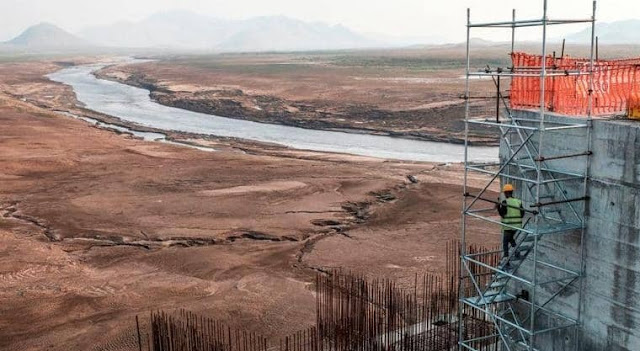
Egyptian Foreign Ministry: No tangible progress in the negotiations of the Renaissance Dam
AlNahda dam
And Cairo said, in a statement, that "the four ministerial meetings did not lead to tangible progress due to the intransigence of Ethiopia and its adoption of excessive positions in it reveal its intention to impose the fait accompli."
The Egyptian Foreign Ministry added that the "Ethiopian intransigence" also reveals the intention of Addis Ababa to extend its control over the Blue Nile and to fill and operate the Renaissance Dam without the slightest consideration of the water interests of the downstream countries, especially Egypt as the last downstream country.
Egypt stressed that this Ethiopian approach violates Addis Ababa's legal obligations, according to international treaties and norms, and added that Addis Ababa does the same in common rivers with other countries.
Egypt reported that the Ethiopian approach emerged in its technical stances and proposals that it presented during the ministerial meetings, which reflect Ethiopia's intention to fill the reservoir of the Renaissance Dam unconditionally, and without applying any rules that provide real guarantees to the downstream countries and protect them from potential damage to the filling process.
The statement indicated that the reason for Ethiopia's refusal to drain the natural revenue during the operation of the Renaissance Dam, is due to its intention to employ the dam completely freely in the future without regard to Egypt's water interests, while the dam is originally aimed at generating electric power.
The statement said, "Contrary to what was stated in the statement of the Ethiopian Foreign Ministry, which claimed that Egypt asked to fill the Renaissance Dam in a period of 12 to 21 years, Egypt did not specify a number of years to fill the Renaissance Dam."
She emphasized that the fact of the matter is that "the three countries agreed more than a year ago to fill the dam in stages that the speed of its implementation depends on the annual revenue of the Blue Nile, as the Egyptian offering leads to filling the Renaissance Dam in 6 or 7 years if the river's revenue is average or above average." During the filling period. "
And he added, "In the event of a drought, the Egyptian proposal could bridge the Renaissance by generating 80 percent of its production capacity from electricity, which means that the Ethiopian side will bear the burden of drought by a small percentage."
The Egyptian Foreign Ministry stated that, contrary to what was included in the statement of the Ethiopian Foreign Ministry regarding the concept of water deficit, Egypt proposed setting mechanisms and rules to adapt to the hydrological changes in the Blue Nile and to deal with the drought years that may coincide with the process of filling the Renaissance Dam, including slowing the speed of filling and taking out quantities Of the water stored in the Renaissance Dam to reduce the negative effects of the filling process during drought and bridge the water deficit that the downstream countries may be exposed to.
She said that Ethiopia wants Egypt alone to bear the burden of drought, which is inconsistent with the rules of international law and the principles of fairness and equity in the uses of international rivers.
Egypt confirmed that it will participate in the meeting that the US Treasury Secretary will hold with the foreign and water ministers of Egypt, Sudan and Ethiopia in Washington on January 13 and 14 this year, in order to preserve "Egypt's interests that cannot be tolerated."
